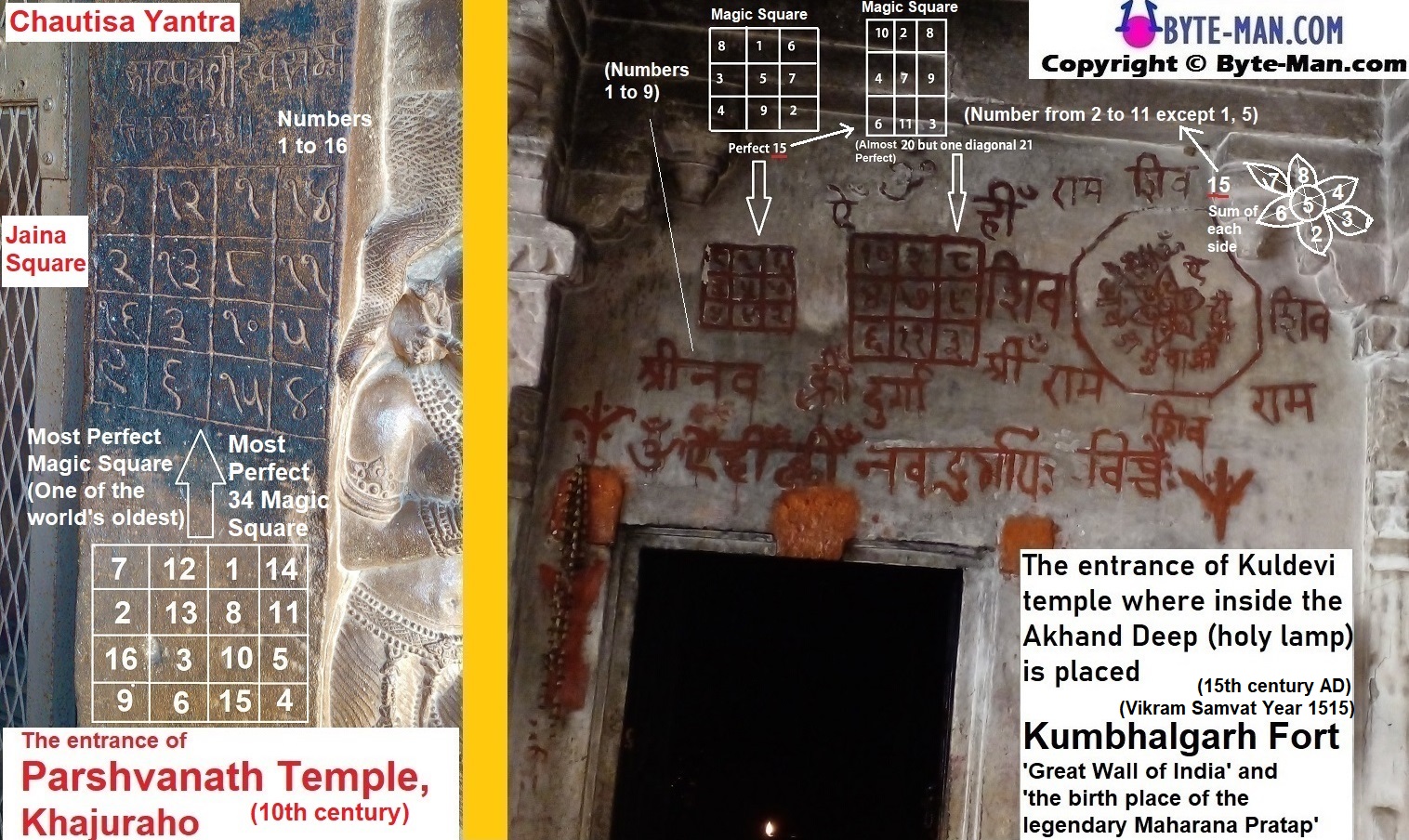As well as giving the world the concept of zero, Indian mathematicians made significant contributions to the study of algebra, arithmetic, trigonometry, and numbers. In my view, spirituality has no religious overtones. That’s why some ancient Indian temples & scriptures are also well-known sources of knowledge and attract research scholars around the world. In mathematics, a square array of numbers is called a magic square if the sums of the numbers in each row, each column, and both main diagonals are the same.
Let’s take the examples of two temples that are also part of UNESCO World Heritage Sites in India and their mathematical magic square connections.

- Parshvanath temple, Khajuraho, Madhya Pradesh
Parshvanath temple, Khajuraho is believed to have been constructed by a prominent Jain family in the 10th-century, during the reign of the Chandela king Dhanga and is a part of the Khajuraho Group of Monuments. The monuments at Khajuraho were inscribed on the UNESCO World Heritage List in 1986. There is a 4×4 magic square consisting of all numbers from 1 to 16 inscribed on the entrance pillar of this Jain temple. The numbers are arranged inside the square such that the sum of the numbers in every horizontal row, every vertical column, and every diagonal is 34. Not only that, the sum of the four numbers in any 2 by 2 sub-squares inside the big square is also 34. Because of these properties, this square is called the Most Perfect 4×4 Magic Square and is one of the world’s oldest and most perfect magic squares. It is also known as ‘Chautisa Yantra’ or ‘Jaina Square’.
- Kuldevi Temple, Kumbhalgarh Fort, Rajasthan
The Hill Forts of Rajasthan are six forts, spread across Rajasthan state in northern India and have been clustered as a series and designated as a UNESCO World Heritage Site in 2013. One of them is Kumbhalgarh Fort, also known as the Great Wall of India. The credit for the construction of Kumbhalgarh Fort goes to Maharana Kumbha, who established it in the Vikram Samvat year 1515 (15th century, 1458 AD.)(Source:https://amritmahotsav.nic.in/district-reopsitory-detail.htm?24308). This fort is also the birthplace of the legendary Maharana Pratap.
There is a Kuldevi temple in the fort where, inside the Akhand Deep (a wicker lamp that is never allowed to go off) is kept. At the entrance of this temple I discovered one perfect 3×3 magic square and another almost perfect 3×3 magic square and the last one flower type arrangement.
The first magic square consists of numbers 1 to 9 and the sums of the numbers in each row, each column, and both main diagonals are 15.
The last flower type arrangement consists of numbers 2 to 8 in such a way that the sums of the numbers of all three sides/diagonals are 15.
The second magic square and middle arrangement consists of numbers 2 to 11, excluding 1,5 and the sums of the numbers in each row, each column and one diagonal are 20, except one diagonal is 21.
I haven’t found anything related to this magic square written or mentioned by anyone on the internet or offline. Anyway, hope you found this interesting.
If possible, do visit both UNESCO World Heritage sites and get the experience of Incredıble !ndia – अतुल्य! भारत.
I have constructed a very unique magic square and named it “MILLENIUM MAGIC SQUARE” and published it in my original puzzle book “COMPUTATIONAL PUZZLES TO FLEX YOUR BRAIN”. For more: https://byte-man.com/millenium-magic-square/


